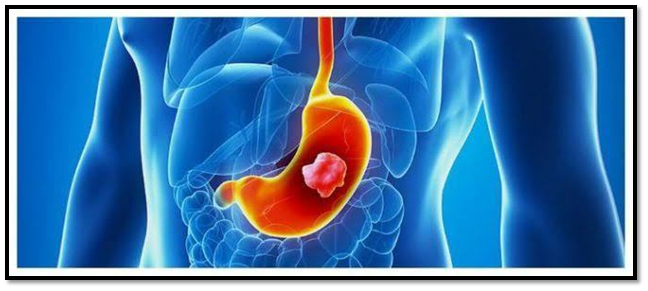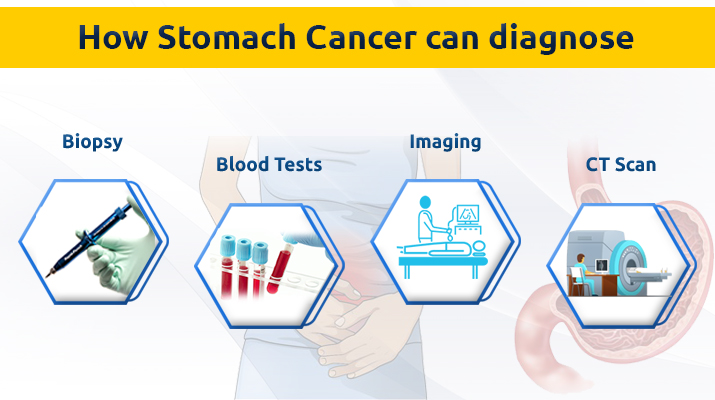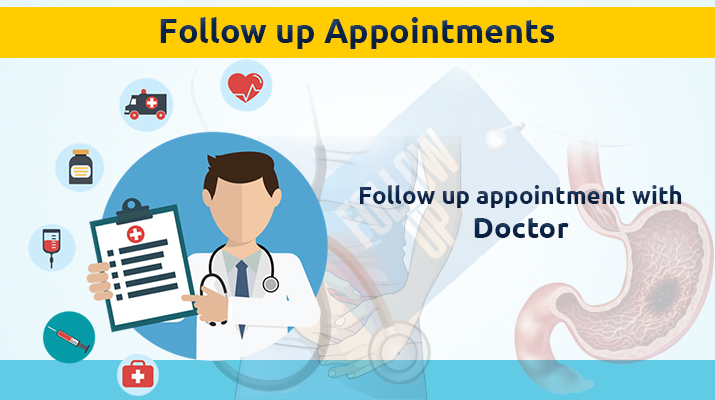Stomach Cancer Treatment in Pune - Prolife Cancer Centre
What is Stomach Cancer?
Stomach cancer, also known as gastric cancer, is a buildup of abnormal cells that form a mass in part of the stomach.
Stomach cancer usually begins in the mucus-producing cells that line the stomach. This type of cancer is called adenocarcinoma.

Parts of the stomach –
The stomach has 5 parts:

- Cardia: The first part is closest to the esophagus
- Fundus: The upper part of the stomach next to the cardia
- Body (corpus): The main part of the stomach, between the upper and lower parts
- Antrum: The lower portion (near the intestine), where the food mixes with gastric juice
- Pylorus: The last part of the stomach, which acts as a valve to control the emptying of the stomach contents into the small intestine.
Types of stomach cancers
- AdenocarcinomaMost (about 90% to 95%) cancers of the stomach are adenocarcinomas. Stomach cancer or gastric cancer almost always is an adenocarcinoma. These cancers develop from the cells that form the innermost lining of the stomach (the mucosa).
- LymphomaThese are cancers of the immune system tissue that are sometimes found in the wall of the stomach. The treatment and outlook depend on the type of lymphoma.
- Gastrointestinal stromal tumor (GIST)These rare tumors start in very early forms of cells in the wall of the stomach called interstitial cells of Cajal. Some of these tumors are non-cancerous (benign); others are cancerous. Although GISTs can be found anywhere in the digestive tract, most are found in the stomach.
- Carcinoid tumorThese tumors start in hormone-making cells of the stomach. Most of these tumors do not spread to other organs.
- Other CancersOther types of cancer, such as squamous cell carcinoma, small cell carcinoma, and leiomyosarcoma, can also start in the stomach, but these cancers are very rare.
Stomach Cancer
Book Appointment
Quick Contact
- Address 557A1/15C Gultekadi, Market Yard Pune, Maharashtra 411037
- Email social.prolife@gmail.com
- Phone +91-9607079019, +91-9607079029
symptoms of stomach cancer
Signs and symptoms of Gastroesophageal junction cancer and stomach cancer may include:
- Fatigue
- Feeling bloated after eating
- Feeling full after eating small amounts of food
- Severe, persistent heartburn
- Severe indigestion that is always present
- Unexplained, persistent nausea
- Stomach pain
- Persistent vomiting
- Unintentional weight loss
If you have signs and symptoms that worry you, make an appointment with your doctor. Your doctor will likely investigate more common causes of these signs and symptoms first.
Diagnosis of Stomach Cancer

Tests and procedures used to diagnose Gastroesophageal junction cancer and stomach cancer include:
- A tiny camera to see inside your stomach (upper endoscopy).A thin tube containing a tiny camera is passed down your throat and into your stomach. Your doctor can look for signs of cancer. If any suspicious areas are found, a piece of tissue can be collected for analysis (biopsy).
- Imaging tests. Imaging tests used to look for stomach cancer include computerized tomography (CT) scans and a special type of X-ray exam sometimes called a barium swallow.
Determining the extent (stage) of stomach cancer
The stage of your stomach cancer helps your doctor decide which treatments may be best for you. Tests and procedures used to determine the stage of cancer include:
- Imaging tests. Tests may include CT and positron emission tomography (PET).
- Exploratory surgery. Your doctor may recommend surgery to look for signs that your cancer has spread beyond your esophagus or stomach, within your chest or abdomen. Exploratory surgery is usually done Laparoscopically. This means the surgeon makes several small incisions in your abdomen and inserts a special camera that transmits images to a monitor in the operating room.
Stages of Stomach Cancer
The stages of adenocarcinoma of the stomach or esophagus include:
- Stage I.At this stage, the tumor is limited to the top layer of tissue that lines the inside of the esophagus or stomach. Cancer cells also may have spread to a limited number of nearby lymph nodes.
- Stage II. Cancer at this stage has spread deeper, growing into a deeper muscle layer of the esophagus or stomach wall. Cancer may also have spread to more of the lymph nodes.
- Stage III. At this stage, cancer may have grown through all the layers of the esophagus or stomach and spread to nearby structures. Or it may be a smaller cancer that has spread more extensively to the lymph nodes.
- Stage IV. This stage indicates that cancer has spread to distant areas of the body.
Treatment for Stomach Cancer

In cancer care, different types of doctors often work together to create a patient’s overall treatment plan that combines different types of treatments. This is called a multidisciplinary team. For stomach cancer, this team may include the following doctors:
- Gastroenterologist, a doctor who specializes in the gastrointestinal tract including the stomach and intestines
- The surgeon or surgical oncologist, a doctor who specializes in treating cancer using surgery
- Medical oncologist, a doctor who specializes in treating cancer with medication
- Radiation oncologist, a doctor who specializes in giving radiation therapy to treat cancer
- Pathologist, a doctor who specializes in interpreting laboratory tests and evaluating cells, tissues, and organs to diagnose disease.
- Radiologist, a medical doctor who specializes in using imaging tests to diagnose disease
Surgery
Surgery is the removal of the tumor and some surrounding healthy tissue during an operation. The type of surgery used depends on the stage of cancer.
Radiation therapy
Radiation therapy is the use of high-energy x-rays or other particles to destroy cancer cells. A radiation therapy regimen, or schedule, usually consists of a specific number of treatments given over a set period of time. People with stomach cancer usually receive external-beam radiation therapy, which is radiation given from a machine outside the body. Radiation therapy may be used before surgery to shrink the size of the tumor or after surgery to destroy any remaining cancer cells.
Therapies using medication
Systemic therapy is the use of medication to destroy cancer cells. This type of medication is given through the bloodstream to reach cancer cells throughout the body.
Common ways to give systemic therapies include an intravenous (IV) tube placed into a vein using a needle or in a pill or capsule that is swallowed (orally).
The types of systemic therapies used for stomach cancer include:
- Chemotherapy
- Targeted therapy
- Immunotherapy
- Chemotherapy
Chemotherapy is the use of drugs to destroy cancer cells, usually by keeping the cancer cells from growing, dividing, and making more cells. - Targeted therapy
Targeted therapy is a treatment that targets cancer’s specific genes, proteins, or the tissue environment that contributes to cancer growth and survival. This type of treatment blocks the growth and spread of cancer cells while limiting damage to healthy cells. - Immunotherapy
Immunotherapy also called biologic therapy, is designed to boost the body’s natural defenses to fight cancer. It uses materials made either by the body or in a laboratory to improve, target, or restore immune system function.
Stomach Cancer: Follow-Up Care

Care for people diagnosed with cancer does not end when active treatment has finished. Your health care team will continue to check that cancer has not come back, manage any side effects, and monitor your overall health. This is called follow-up care.
Your follow-up care may include regular physical examinations, medical tests, or both. Doctors want to keep track of your recovery in the months and years ahead. People who have had their entire stomach removed can feed themselves, but it is important for them to re-learn how to eat after this major surgery. Talk to your doctor about this type of rehabilitation.
Watching for recurrence
A goal of follow-up care is to check for a recurrence, which means that cancer has come back. Cancer recurs because small areas of cancer cells may remain undetected in the body. Over time, these cells may increase in number until they show up on test results or cause signs or symptoms. During follow-up care, a doctor familiar with your medical history can give you personalized information about your risk of recurrence. Your doctor will ask specific questions about your health. Some people may have blood tests or imaging tests done as part of regular follow-up care, but testing recommendations depend on several factors, including the type and stage of cancer originally diagnosed and the types of treatment given.
Managing long-term and late side effects
Most people expect to experience side effects when receiving treatment. However, it is often surprising to survivors that some side effects may linger beyond the treatment period. These are called long-term side effects. Other side effects called late effects may develop months or even years afterward. Long-term and late effects can include both physical and emotional changes.
Talk with your doctor about your risk of developing such side effects based on the type of cancer, your individual treatment plan, and your overall health.
Keeping personal health records
You and your doctor should work together to develop a personalized follow-up care plan. Be sure to discuss any concerns you have about your future physical or emotional health.
Some survivors continue to see their oncologist, while others transition back to the care of their family doctor or another health care professional. This decision depends on several factors, including the type and stage of cancer, side effects, health insurance rules, and your personal preferences.
If a doctor who was not directly involved in your cancer care will lead your follow-up care, be sure to share your cancer treatment summary and survivorship care plan forms with him or her and with all future health care providers. Details about your cancer treatment are very valuable to the health care professionals who will care for you throughout your lifetime.
Stomach Cancer Statistics
Stomach cancer mostly affects older people. The average age of people when they are diagnosed is 68. About 6 of every 10 people diagnosed with stomach cancer each year are 65 or older. The risk that a man will develop stomach cancer in his lifetime is about 1 in 95. For women, the chance is about 1 in 154. But each person’s risk can be affected by certain other factors.
Stomach cancer is the fourth most commonly occurring cancer in men and the seventh most commonly occurring cancer in women. There were over 1 million new cases in 2018. The top 20 countries with the highest rates of stomach cancer in 2018.
This year, an estimated 27,510 (17,230 men and 10,280 women) in the United States will be diagnosed with stomach cancer.
It is estimated that 11,140 deaths (6,800 men and 4,340 women) from this disease will occur this year.
If the cancer is diagnosed and treated before it has spread outside the stomach, the 5-year survival rate is 68%. If cancer has spread to surrounding tissues or organs and/or the regional lymph nodes, the 5-year survival rate is 31%. If cancer has spread to a distant part of the body, the 5-year survival rate is 5%.

Dr. Sumit Shah – Stomach Cancer Specialist in Pune
Dr. Sumit Shah, founder of Prolife Cancer Centre & Research Institute, is a distinguished Chief Consultant, Surgical Oncologist, and Robotic Surgeon. His expertise in surgical oncology is backed by his recognition as the Best Outgoing Cancer Surgeon during his super-specialty course at the Cancer Centre Welfare Home and Research Institute in Kolkata. Widely regarded as a leading Stomach Cancer Specialist in Pune, Dr. Shah offers advanced, personalized cancer treatments at his state-of-the-art facility.

